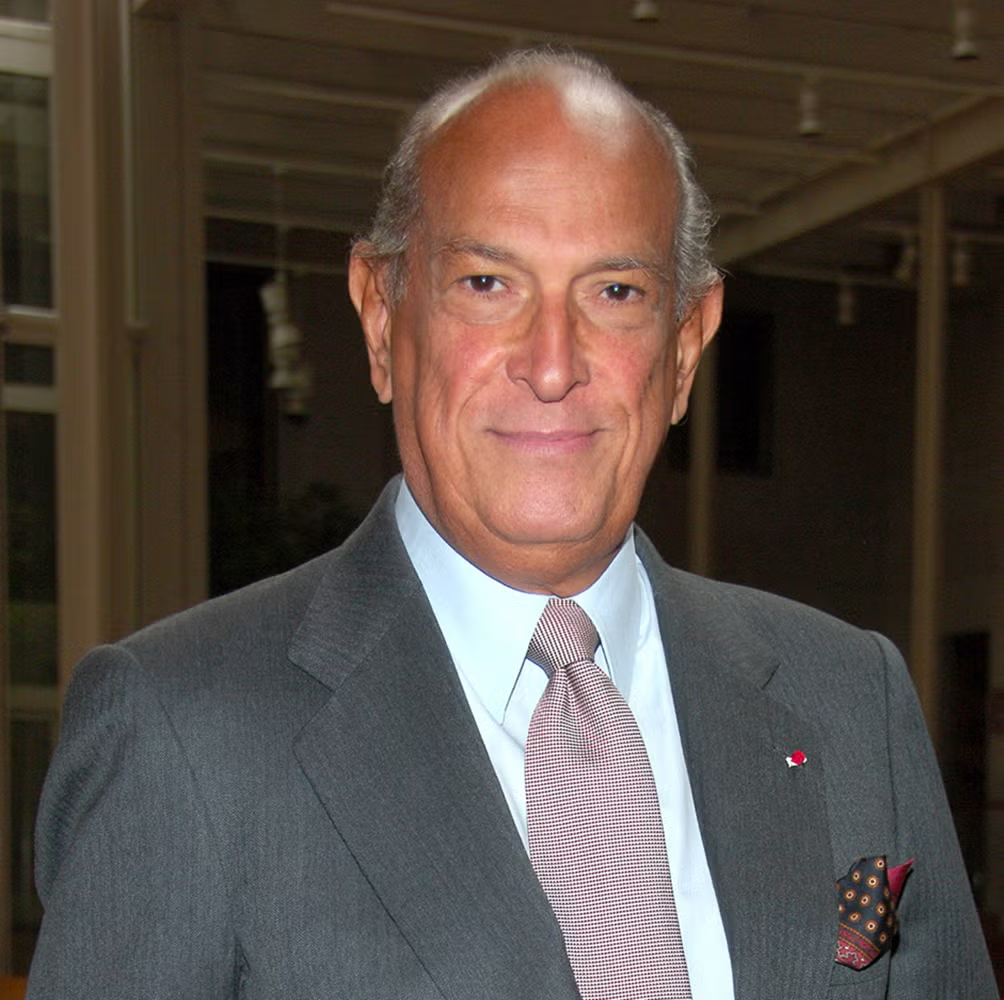
Table of Contents
Who Was Oscar de la Renta?
Oscar de la Renta was a legendary Dominican-American fashion designer renowned for his elegant and feminine haute couture creations. After studying painting in Madrid at the age of 18, he was captivated by the world of fashion, which ultimately led him to become one of the most influential names in the industry. His exquisite designs, characterized by their flattering silhouettes and sophisticated charm, earned him a global following, and his creations were favored by several first ladies, further cementing his legacy in the world of fashion.
Early Years
Born on July 22, 1932, in Santo Domingo, Dominican Republic, Oscar de la Renta grew up in a middle-class family with six sisters. At 18, he left his home country to study painting at the Academy of San Fernando in Madrid. Although he initially aspired to be an abstract painter, his natural talent for illustration steered him toward fashion. His skill quickly caught the attention of Spanish couture legend Cristobal Balenciaga, who offered him an apprenticeship.
In 1961, while vacationing in Paris, de la Renta was hired for his first significant fashion role at Lanvin-Castillo. By 1963, he moved to New York, where he joined Elizabeth Arden’s design house, further establishing his reputation. In 1965, with a solid foundation, he launched his own signature ready-to-wear label, which would soon gain recognition worldwide.
Personal Life
In 1967, de la Renta married Francoise de Langlade, the editor-in-chief of French Vogue. Francoise played a crucial role in his career, introducing him to influential figures in the fashion industry and inviting many high-profile individuals to his shows. Through her support, de la Renta’s designs, known for their delicate silk prints, ruffles, soft silhouettes, and vibrant colors, became synonymous with casual luxury. His gowns were highly coveted by women of affluence, and for those who could not afford his couture, he introduced his first fragrance in 1977.
De la Renta’s contributions to the fashion industry extended beyond design. He served as president of the Council of Fashion Designers of America (CFDA) from 1973 to 1976 and again from 1986 to 1988, earning the respect of his peers.
In 1983, de la Renta experienced profound personal loss with the death of his wife Francoise from bone cancer. In the wake of this tragedy, he adopted a son from an orphanage in his native Dominican Republic. In 1990, he remarried to philanthropist and socialite Annette Engelhard Reed, continuing to expand both his personal and professional legacy.
A Fashion Legend
Oscar de la Renta, one of the most iconic designers of his time, continued to innovate in the fashion world throughout the 1990s while maintaining his signature feminine and flattering aesthetic. By the late ’90s and early 2000s, his designs became the preferred choice for American first ladies. Notably, he dressed First Lady Nancy Reagan in the 1980s, and his gowns were selected for the inaugural events of both Hillary Clinton in 1997 and Laura Bush in 2005.
Beyond his contributions to haute couture, de la Renta was a dedicated patron of the arts. He served on the boards of prestigious institutions such as The Metropolitan Opera, Carnegie Hall, and Channel Thirteen/WNET. Additionally, he supported several cultural organizations, including New Yorkers for Children, the Americas Society, and the Spanish Institute.
In 2002, de la Renta expanded his brand into the world of interior design, launching a line of furniture with Century Furniture. His collection, which included dining tables, upholstered chairs, and couches, showcased his renowned sense of style. Two years later, he introduced a more affordable clothing line, O Oscar, in 2004, with the aim of reaching a wider audience without compromising the prestige of his main brand.
Death
Oscar de la Renta was diagnosed with cancer in the early 2000s. He passed away on October 20, 2014, at the age of 82, due to complications from the disease in Kent, Connecticut, leaving behind a lasting legacy in both the fashion industry and the arts.
